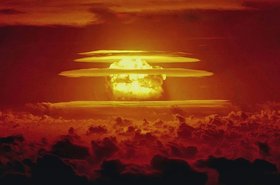The UK's Atomic Weapons Establishment has awarded Atos a contract to install new SpectraLogic TFinity Tape Libraries for its nuke-simulating supercomputer.
With nuclear weapons testing prohibited under The Comprehensive Nuclear Test Ban Treaty, AWE simulates nuclear weapons explosions and models the decay of the UK's existing arsenal of around 215 warheads.
Simulating the apocalypse
While the UK government owns the sites and facilities of the Atomic Weapons Establishment, the Ministry of Defence has a government-owned contractor-operated contract with AWE Management Limited.
AWE ML consists of three shareholders - American defense giant Lockheed Martin, British outsourcing company Serco and US technical professional services firm Jacobs Engineering Group.
“High performance computing is a critical underpinning technology in the vast majority of our science based program,” said Paul Tomlinson, High Performance Computing at AWE.
“Following a competitive tendering process, we are delighted to have selected Atos and Spectra Logic as our partners. AWE has had a successful relationship with Atos going back to 2008, and most recently installed a BullSequana x1000 Supercomputer. These new Spectra Logic tape libraries provide more storage capacity in less space than our previous libraries. “
Installed in 2017, the BullSequana supercomputer has an estimated peak performance of 4.3 petaflops and joined a smaller IBM supercomputer at AWE.
These systems pale in comparison to the supercomputers used by the US Department of Energy and the National Nuclear Security Administration. Among them is the world's third-fastest supercomputer, the Sierra system - capable of 94.6 petaflops. China's Sunway TaihuLight, also thought to be used for nuclear simulations, tops out at 93 petaflops.
From 2023, the US government plans to dedicate the 1.5 exaflops El Capitan supercomputer purely to classified simulations.
"Our nuclear weapons were developed, and thus far maintained, using 2D simulations," Lawrence Livermore National Laboratory director Bill Goldstein told DCD.
"Our computers have not been powerful enough to handle the third dimension with enough speed, and enough accuracy. "The lack of 3D has introduced inaccuracies and uncertainties into our work that we can no longer be satisfied with. We'd like to say that, while the stockpile was designed in 2D, it's actually aging in three. El Capitan will permit faster, more detailed 3D modeling and simulations, reducing the time needed for the most complex calculations. And most importantly, El Capitan should make simulations in 3D as routine as they currently are in 2D."
"If you like to think of it this way, this is in some ways the killer app for El Capitan."




